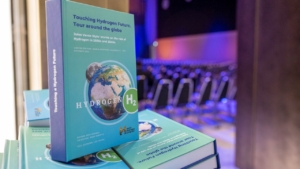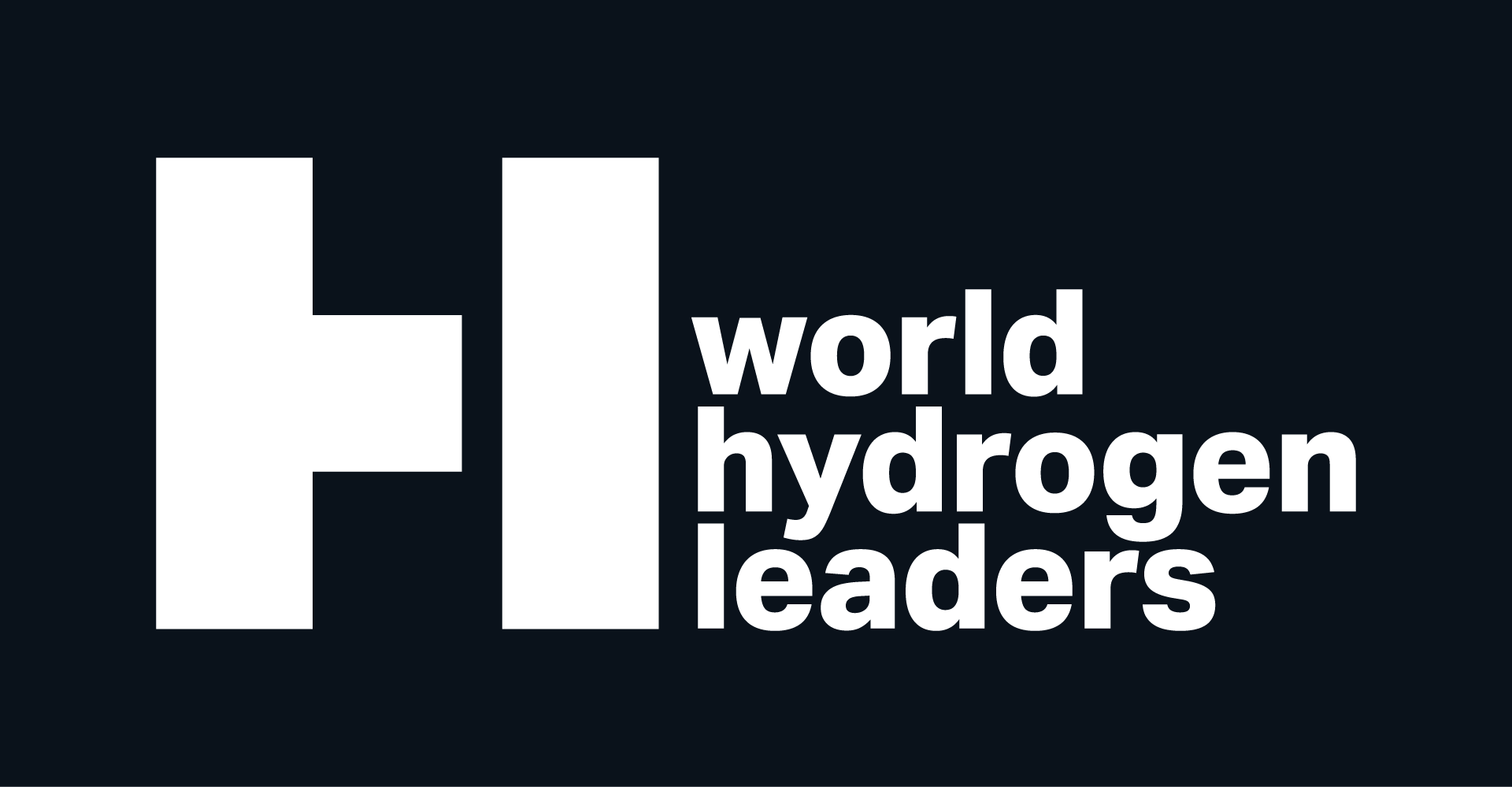“Wrapping up 2022 and setting ambitions for 2023 “
What a year!
If 2021 was a defining year for the hydrogen sector, 2022 was ‘the accelerator’: By August 2022, 27 countries had already adopted national hydrogen policy/strategy documents, with another 31 at different stages of preparation (Hydrogen Europe, Clean Hydrogen Monitor 2022); More than 650 large-scale hydrogen proposals were put forward – an investment increase of 50% since November 2021! (IEA, Global Hydrogen review 2022). Europe was leading the race until the US entered the game: while Europe proposed to increase the hydrogen targets by 2030 to 20 Mt, the US signed the largest climate investment in US history via the Inflation Reduction Act (IRA).
Although much has been said and announced… 99.3% of hydrogen was still produced by conventional, polluting methods (Hydrogen Europe, Clean Hydrogen Monitor 2022). This means that the available time to ‘act’ is becoming narrower…
In ‘Touching Hydrogen Future’, launched for free on 14th February 2022, we do just that: present the diverse, and global opportunities in the developing hydrogen economy and how hydrogen will materialize (or not) in our lives.
The book covers 27 countries around the world and has been written to educate and inspire the next generation to embrace and help develop hydrogen technology. But it also raises some important questions about our future energy system: who will bear the costs? which are the consequences of the lack of action? how are policy decisions shaping the lives of many?
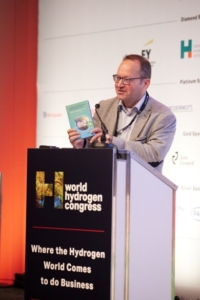
Since the launch, the book has been downloaded by +6,500 people, in +120 countries. We have hosted several webinars thanks to our media partners, EnergyPost and World Hydrogen Leaders and we appeared in different media around the globe. The cornerstone of this initiative took place in October when World Hydrogen Leaders sponsored the printing of more than 100 physical copies of the book to freely distribute them among participants to the World Hydrogen Congress.
Due to the growing interest and positive feedback, a second edition of the book will be launched in April this year including key missing countries in the first edition such as Brazil, Singapore, Korea, Kazakhstan, and many more.
Of course, as with any idea, we already received negative feedback: ‘how you dare to touch a hydrogen future if hydrogen is nonsense?’ Some people told us. The beauty of the book is being able to gather people from all around the world – from key energy leaders to young energy professionals – to present their thoughts on hydrogen development and challenge some of the preconceived ideas attached to it. Allowing diverse voices with different backgrounds and at all levels of society is key in a sector that demands new ideas to succeed. the energy transition is not a ‘solo’ adventure, we all must be part of it and, as such, we all should have the opportunity to provide ideas for discussion without being criticized for not complying with the ‘status quo’…
Hydrogen has come to stay. Whether it will or will not succeed and where depends on us and the decisions we all make.
Being part of the solution starts today, are you ready?
Co-authors’ reflections on 2022…
Argun Karacay (author of Turkey chapter)
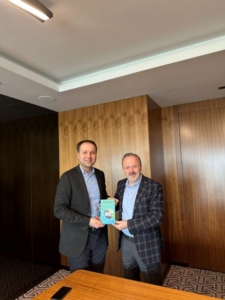
This year we have established the Green Hydrogen Association (H2 Der) in Türkiye. Enclosed you May find a photo from our first management board Meeting of H2 Der. I also attached the photo where I presented our Touching Hydrogen Future Book to the President of our H2 Der Association Mr. Yusuf Günay was the first book in the Association’s library.
2022 in a nutshell; Ukraine-Russia war truly showed the vital importance of Energy Independence. Such recognition also led to an important increase in public awareness in favor of green Technologies as a vital part of the security of Supply. Green Hydrogen started to be a major agenda item in Türkiye from this perspective. We have also addressed this in several TV interviews together with H2 Der Association members.
I believe that green hydrogen will become a more solid topic in 2023 when its legislative framework is also expected to be published. Of course, several measures/incentives will also be needed to foster the development of green hydrogen projects and as H2 Der Association, we will be supporting and informing the decision makers in these aspects.
Joachim von Scheele (author of China chapter)
2022 saw positive developments in the hydrogen space, however, perhaps at a slower pace than many were hoping for. The media flow is still dominated by announcements of largely aspirational projects rather than real achievements. Yet, we are moving in the right direction, and with increasing awareness about what needs to be done
New supportive policies have been announced in several countries. Among the more impactful are those in Australia and the USA, the latter with nearly $400 billion for clean energy development; those are likely to have positive repercussions on global development across the hydrogen value chain. China is the world’s largest emitter of CO2 and producer of hydrogen. In 2020 President Xi announced the 30-60 Climate Goal, to peak China’s CO2 emissions no later than in 2030 and to become carbon neutral by 2060. It seems the 2030 goal will be achieved already 2-3 years earlier. China is the leading producer of green electrons with the world’s largest installed capacity of solar and wind power, respectively, and this development continues. Additionally, China has taken on a very ambitious program for new nuclear power plants, already including 46 new reactors either in the construction or planning phase. The use of recycled scrap metal in the Chinese steel industry is now increasing by 10 million tonnes every year, and the import of natural gas, both via pipelines and as LNG, continues to ramp up replacing more CO2 intensive alternatives. And a lot of positive developments are happening in the Chinese hydrogen space, including 13,000 FCEVs in 2022, making it likely China will be the world’s largest producer and user of clean hydrogen.
Larger and more efficient electrolyzers are being built, and PEM electrolyzers at 35-50 MW will come on stream within the next two years. Additionally, projects with up to 1 GW are on the drawing boards. The use of hydrogen, a positive example is its use as fuel for certain industrial heating applications. The world’s first permanent industrial-scale steel reheating, using a 20 MW electrolyzer, will be commissioned in Sweden this year.
The biggest challenge in the hydrogen sector is a viable supply of clean power. This might lead to geographical dislocations of industrial value chains, which creates risks for deindustrialization in places like Europe, potentially accentuated by the development of a multipolar world. For industrial cases, it is favorable to use hydrogen where it is produced and develop the value chain there.
It is extremely important policymakers speed up the implementation of announced policies and focus on putting in place the fundamentally and urgently needed conditions for a viable supply of clean energy and an improved regulatory framework across the hydrogen value chain. In this context, we should also highlight the need for a creating consensus for certification of the carbon footprint of hydrogen production so we, finally, can put the ever-expanding opaque “color coding” behind us.
Keep up your passion and pair it with knowledge and realist views, and we will together successfully pursue the hydrogen vector in our joint global village!

Joachim von Scheele with Professor Horst Kunhardt, Head of European Campus at Deggendorf Institute of Technology
Miguel Ballesteros (author of Colombia chapter)
I can only be more excited one year after launching the book. The science and geopolitics of energy evolve quickly and the future looks very promising. Predictions of cost-competitive hydrogen remain on the right track; the European Hydrogen Bank and the Inflation Reduction Act in the U.S. are just a couple of examples from 2022 of the willingness to develop this market, along with an exorbitant carbon price in the coming years. Tracing the origin of hydrogen, as mentioned in the Ukraine chapter, or future hydrogen offset credits, as mentioned in the Greece chapter; are plausible measures to await. Carriers such as ammonia and other hydrogen derivatives are likely to play an important role in shipping, agriculture, and other emerging sectors.
2022 also saw the unprecedented agreement to protect biodiversity in COP15, a much-needed collaborative effort in conjunction with decarbonization. The authors highlight the importance of the environment, with the example of Mehdia beach vulnerable to global warming in Morocco, protecting ecosystems in Peru and Colombia such as the Amazon jungle, or the Great Barrier Reef in Australia; to mention a few examples from the book.
Research, technology, and innovation are inspiring aspects of the book. First, due to the multiple hydrogen production methods such as electrolysis, pyrolysis, SMR+CCS, gasification, or fascinating photoelectrocatalysis. Besides, the authors acknowledge hydrogen is only part of the solution, and all types of efforts are needed (e.g., electrification, energy efficiency), including photovoltaics, wind, nuclear, tidal, and others in the power sector; biofuels, SAFs, EVs and FCEVs in the transport sector; Electric Arc Furnace (EAF), oxyfuel combustion, blending, co-firing hydrogen with natural gas, and much more in industrial processes.
Huge economies like the U.S. and China, both important CO2 emitters, have interesting hydrogen strategies explained by the authors. However, actions from every country count for the future global trade of low-carbon hydrogen, including small countries like Namibia or Uruguay. For instance, Japan is clearly described as a key hydrogen importer, European ports in the Netherlands (Rotterdam being a pioneer) and Germany are very strategic, and North African energy corridors become crucial in the Mediterranean. The Black Sea, the North Sea, the Aegean Sea, and the Pacific and Atlantic oceans, all will be critical routes to transport molecules and electrons, as mentioned in the book.
Interestingly, the last month of 2022 coincides with the last page of the book in the Germany chapter. Scientists in California announced in December a ground-breaking milestone in today’s utopic aspirations of bountiful energy, thanks to nuclear fusion, for which hydrogen is typically used for experiments, as more energy was produced than the one used for the reaction in a laboratory. Even though a lot of work is still needed, will we see commercialization of nuclear fusion before 2050 as suggested by one of the authors in Touching Hydrogen Future?
Oghosa Erhahon (author of Namibia chapter)
2022 was a year that had many expectations, especially after 2020… that big ol’ decade mark. The highlight on this front was an unpremeditated adventure that led to meeting follower co-authors at the World Hydrogen Congress in Rotterdam, then holding on to a physical copy of what is my first published book. Globally, the prospect of a hydrogen economy spiked interest and many found this time-old phenomenon can 1) be a solution for decarbonization across industries, 2) provide fossil fuel economies an export diversification pathway and 3) most important especially for Europe to find a course to diversify energy supply giving Africa an opportunity to set the price for once again, a very essential commodity.
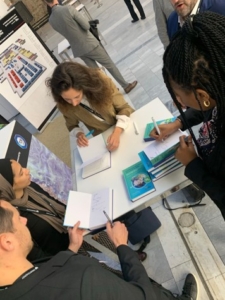 The most exciting aspect of writing my chapter on Namibia’s hydrogen future was that; I have never visited the country before. African countries often described as developing nations, have by the numbers not contributed significantly to the global emissions, but with an opportunity to be part of (or a key) aspect of the climate solution. It is also one of the many things I appreciate about the strength of Africa countries playing roles in the global low-carbon future; be it carbon markets or decarbonisation. Regional and international expectations for harnessing Africa’s vast renewable energy potential are extremely high. These expectations are increasingly reflected in the ambitions for many nations; take for example Namibia – which seeks to tap its renewable (solar and wind) energy potential, particularly in green hydrogen and its derivatives. I see many other African nations reaching for sustainable domestic development and service the emerging international hydrogen market.
The most exciting aspect of writing my chapter on Namibia’s hydrogen future was that; I have never visited the country before. African countries often described as developing nations, have by the numbers not contributed significantly to the global emissions, but with an opportunity to be part of (or a key) aspect of the climate solution. It is also one of the many things I appreciate about the strength of Africa countries playing roles in the global low-carbon future; be it carbon markets or decarbonisation. Regional and international expectations for harnessing Africa’s vast renewable energy potential are extremely high. These expectations are increasingly reflected in the ambitions for many nations; take for example Namibia – which seeks to tap its renewable (solar and wind) energy potential, particularly in green hydrogen and its derivatives. I see many other African nations reaching for sustainable domestic development and service the emerging international hydrogen market.
As Mohamed Jameel Al Ramahi, Chief Executive Officer at Masdar highlights
“If Africa can leverage the power of green hydrogen, it will not only realize its full potential in the clean energy economy, but it will also play an instrumental role in supporting the global energy transition.”
Lavinia Tanase (author of Romania chapter)
2022 or how to prepare for the present, not only for the future.
Uf, that was a tough one!
To say that 2022 has been a tumultuous year would be an understatement: slowly fighting the end stages of COVID-19 and navigating a full-blown energy crisis. Suddenly, the energy industry and the market activity spiked everybody’s interest because geopolitics could have turned “energy” and its eventual penury into a direct threat to society and to every individual, ultimately. It was no longer a hypothetical debate but a rather actual and pervasive one. On some occasions, I even witnessed how the run-of-the-mill and mundane small talk made while waiting in line at the coffee machine or printer was powered by fiery discussions and debates on energy outlooks.
Nobody was ready for what was about to come, but everybody stepped up! The Commission incessantly issuing plans, actions, roadmaps and coordinating with the industry, the Governments intervene to help their citizens cope with the crisis, the companies contribute even more to the benefit of society. Moreover, this gas of the future, hydrogen has been proposed as and became a real vector for the security of supply and not only for the decarbonization of the Old Continent. This is a solution to the challenges brought about by 2022. Also, from my window, I can see difficulties in aligning all the regulatory policies and initiatives for hydrogen at the national level. And especially I can see how the Member States have different starting points in adopting hydrogen technologies or transitioning towards its use in the industry, transportation, and all other sectors. It’s going to be a long road ahead, where changes must be elicited steadily and surely. Romania still does not have a Hydrogen Strategy, the assumption being that alleviating the potential effects of the energy crisis on the Romanian citizens took priority. I am confident that this Strategy will be issued in due course though.
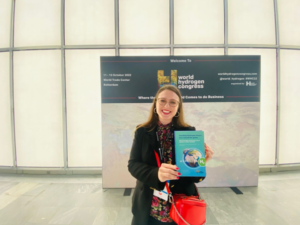 2022 has shown us once again how preparedness is extremely important, both in personal life and at work. And, to me, this preparedness starts with imagination. I believe that the exercise that both Erik and Rosa asked us the “co-authors” to do – in writing some “roadmaps / trajectories” for the hydrogen intake in various countries – can be seen as a stepping stone for that preparedness. Preparedness for the present, not only for the future. Here is a picture of me proudly holding the book at the World Hydrogen Congress in Rotterdam in October 2022. It was one of the highlights of 2022 when I got the chance to take the stage and speak about this gas of the future and the regulations around it.
2022 has shown us once again how preparedness is extremely important, both in personal life and at work. And, to me, this preparedness starts with imagination. I believe that the exercise that both Erik and Rosa asked us the “co-authors” to do – in writing some “roadmaps / trajectories” for the hydrogen intake in various countries – can be seen as a stepping stone for that preparedness. Preparedness for the present, not only for the future. Here is a picture of me proudly holding the book at the World Hydrogen Congress in Rotterdam in October 2022. It was one of the highlights of 2022 when I got the chance to take the stage and speak about this gas of the future and the regulations around it.
In hopes that we will live in stability and health in 2023!
Pictures from World Hydrogen Congress 2022.


